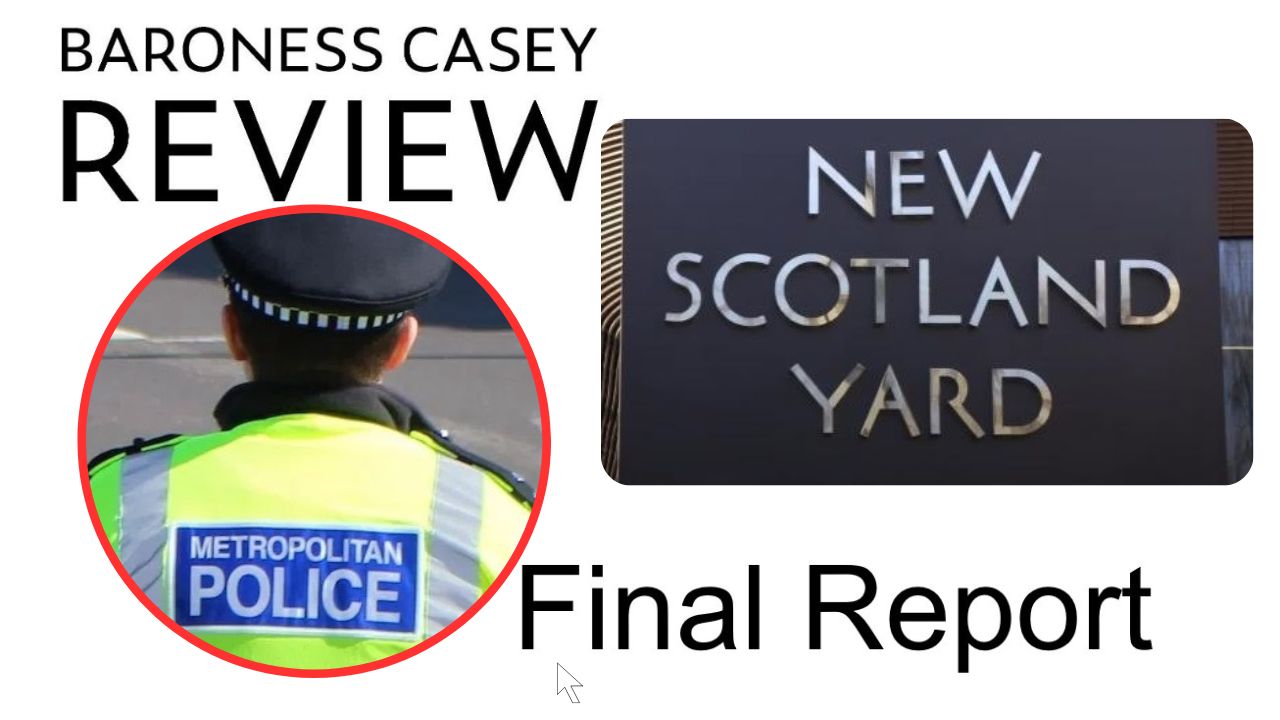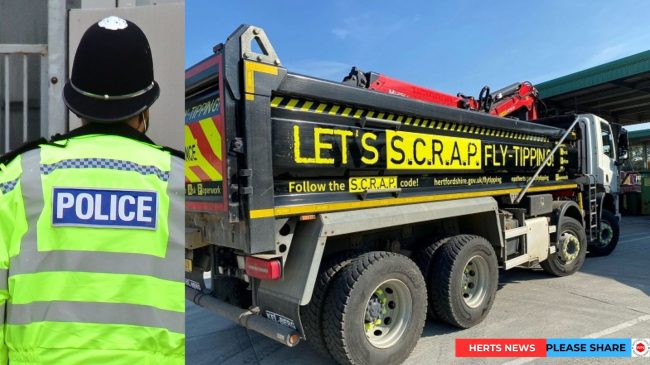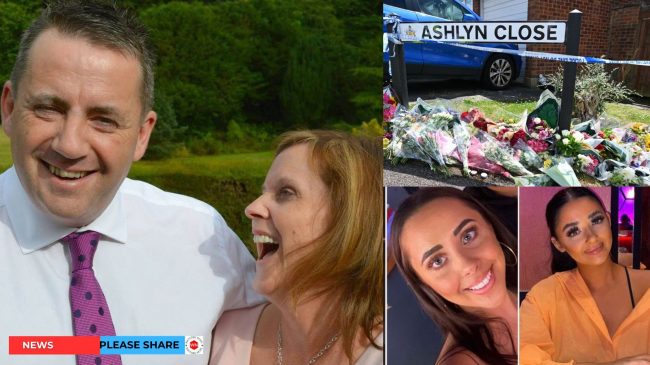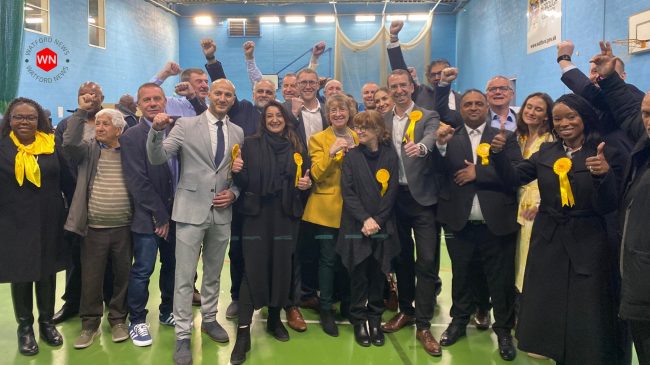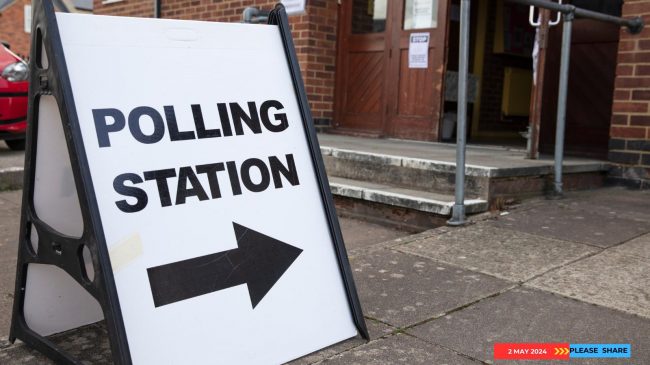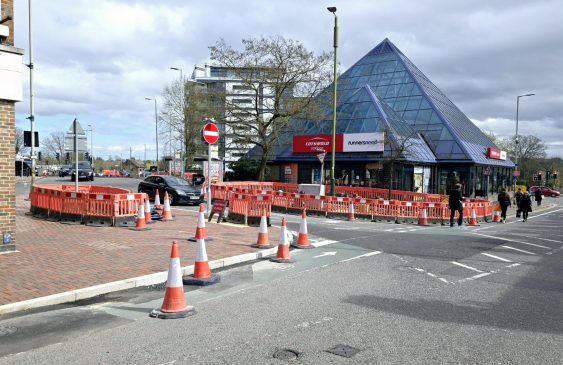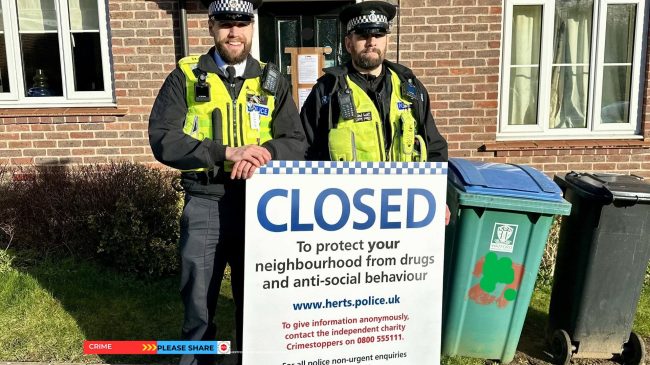Casey Report finds Met police to be institutionally racist, misogynistic and homophobic
An independent review into the standards of behaviour and internal culture of the Metropolitan Police Service
Baroness Casey of Blackstock DBE CB
Contents
Foreword ……………………………………………………………………………………………………. 6
Summary and conclusions ………………………………………………………………………….. 9
Fixing the Met – Recommendations …………………………………………………………… 19
Cleaning up the Met ………………………………………………………………………………………… 20
A new offer to women and children ………………………………………………………………….. 21
Building trust with London’s communities to restore consent …………………………… 22
A new police deal for Londoners ……………………………………………………………………… 22
New leadership and new management ……………………………………………………………… 23
New oversight and accountability…………………………………………………………………….. 23
Showing London that reform is working …………………………………………………………… 24
Introduction and context …………………………………………………………………………… 26
Chapter 1: The Met and Londoners …………………………………………………………… 36
1.1. London’s dynamic population……………………………………………………………………. 36
1.2. Changing service demands and performance …………………………………………….. 38
1.3. Public confidence and trust in the Met ……………………………………………………….. 47
1.4. Why public consent matters: the Peelian principles ……………………………………. 52
1.5. Conclusion……………………………………………………………………………………………….. 58
Chapter 2: The Met’s resources and its response to austerity …………………….. 59
2.1. Introduction ……………………………………………………………………………………………… 59
2.2. Resourcing in the Met ……………………………………………………………………………….. 59
2.3. Reductions in the Met’s resources …………………………………………………………….. 60
2.4. Protecting officer numbers ………………………………………………………………………… 62
2.5. The Met’s approach to resourcing constraints and their impact …………………… 64
2.6. The impact of changes in workforce numbers …………………………………………….. 70
2.7. Workforce planning in the Met: A missed opportunity …………………………………. 73
2.8. Conclusion……………………………………………………………………………………………….. 75
Chapter 3: How the Met is run …………………………………………………………………… 76
3.1. Introduction ……………………………………………………………………………………………… 76
3.2. Recruitment in the Met ………………………………………………………………………………. 77
3.3. Vetting ……………………………………………………………………………………………………… 78
3.4. Arrival and initial training in the Met …………………………………………………………… 79
3.5. Management and supervision ……………………………………………………………………. 81
3.6. Performance Development Reviews …………………………………………………………… 83
3.7. Promotion ………………………………………………………………………………………………… 843
3.8. Training ……………………………………………………………………………………………………. 85
3.9. Policing is a tough job ………………………………………………………………………………. 88
3.10. Leadership ……………………………………………………………………………………………… 91
3.11. Initiative-itis: activity rather than action ……………………………………………………. 98
3.12. The views of Met officers and staff on culture in the Met ………………………….. 103
Chapter 4: On the frontline of policing in London ……………………………………… 106
4.1. Introduction ……………………………………………………………………………………………. 106
4.2. Reorganisation of frontline policing in London: Basic Command Units ………. 107
4.3. The numbers: Who’s on the frontline? ……………………………………………………… 108
4.4. BCUs: the beleaguered frontline ………………………………………………………………. 111
4.5. Demand is not matching supply ………………………………………………………………. 115
4.7. The impact of inexperience ……………………………………………………………………… 123
4.8. Supervision…………………………………………………………………………………………….. 125
4.9. Loss of civilian staff and support services ……………………………………………….. 127
4.10. Geography ……………………………………………………………………………………………. 128
4.11. Drivers………………………………………………………………………………………………….. 130
4.12. Specialist Teams …………………………………………………………………………………… 131
4.13. Commanders not in control ……………………………………………………………………. 132
4.14. Conclusion……………………………………………………………………………………………. 134
Chapter 5: Public Protection …………………………………………………………………… 136
5.1. Introduction ……………………………………………………………………………………………. 136
5.2. Child protection ………………………………………………………………………………………. 137
5.3. Violence against women and girls ……………………………………………………………. 140
5.4. Who’s in charge of Public Protection? ……………………………………………………… 141
5.5. Staffing and workloads ……………………………………………………………………………. 143
5.6. Caseloads ………………………………………………………………………………………………. 145
5.7. Facilities and resources…………………………………………………………………………… 146
5.8. Inexperience and lack of specialist knowledge………………………………………….. 147
5.9. Impact on staff ………………………………………………………………………………………… 149
5.10. Domestic abuse …………………………………………………………………………………….. 151
5.11. Sexual violence …………………………………………………………………………………….. 156
5.12. The responsibility of the rest of the criminal justice system …………………….. 159
5.13. How the Met deals with rape and serious sexual offending: findings from
Operation Soteria Bluestone ………………………………………………………………………….. 162
5.14. The victim experience ……………………………………………………………………………. 165
5.15. Met response to Operation Soteria Bluestone …………………………………………. 166
5.16. Conclusion……………………………………………………………………………………………. 1674
Case studies …………………………………………………………………………………………… 168
Chapter 6: Two specialist units ……………………………………………………………….. 190
6.1. Introduction ……………………………………………………………………………………………. 190
6.2. Specialist Firearms Command (MO19) ……………………………………………………… 190
6.3. PaDP: Parliamentary and Diplomatic Protection ……………………………………….. 196
6.4. Conclusion……………………………………………………………………………………………… 201
Chapter 7: How the Met deals with misconduct and grievances ……………….. 202
7.1. Introduction ……………………………………………………………………………………………. 202
7.2. Misconduct …………………………………………………………………………………………….. 203
7.3. Dealing with officer and staff grievances ………………………………………………….. 206
7.4. Employment Tribunal Claims …………………………………………………………………… 208
7.5. Victims’ and survivors’ perspectives on misconduct…………………………………. 211
7.6. Misconduct case studies: an update ………………………………………………………… 213
7.7. Conclusion……………………………………………………………………………………………… 216
Chapter 8: Governance, scrutiny and accountability………………………………… 217
8.1. Introduction ……………………………………………………………………………………………. 217
8.2. The tripartite structure of police accountability …………………………………………. 217
8.3. Inspection, audit, investigation and advice ……………………………………………….. 221
8.4. Transparency………………………………………………………………………………………….. 226
8.5. How the Met responds to external scrutiny ……………………………………………….. 232
8.6. Conclusion……………………………………………………………………………………………… 233
Chapter 9: Discrimination ………………………………………………………………………… 235
9.i. Introduction …………………………………………………………………………………………….. 235
9.ii. Bullying ………………………………………………………………………………………………….. 238
Chapter 9.1: Homophobia ………………………………………………………………………… 243
9.1.1. Introduction …………………………………………………………………………………………. 243
9.1.2. LGBTQ+ officers and staff: the view from the inside ……………………………….. 244
9.1.3. The Met and the LGBTQ+ community: the view from outside ………………….. 249
9.1.4. Conclusion…………………………………………………………………………………………… 257
Chapter 9.2. Sexism and Misogyny ………………………………………………………….. 258
9.2.1. Introduction …………………………………………………………………………………………. 258
9.2.2. Recruitment of women in the Met ………………………………………………………….. 261
9.2.3. Attrition ……………………………………………………………………………………………….. 263
9.2.4. Progression of women within the ranks …………………………………………………. 263
9.2.5. Life for women in the Met ……………………………………………………………………… 267
9.2.6. Speaking out against sexism and misogyny …………………………………………… 273
9.2.7. Initiatives to challenge sexism and misogyny ………………………………………… 2745
9.2.8. Police perpetrated sexual misconduct and domestic abuse ……………………. 275
9.2.9. Conclusion…………………………………………………………………………………………… 284
Chapter 9.3: Racism ………………………………………………………………………………… 286
9.3.1. Introduction …………………………………………………………………………………………. 286
9.3.2. Racism and its persistence in the Met ……………………………………………………. 288
9.3.3. The Met’s workforce; the internal culture ……………………………………………….. 289
9.3.4. The Met and Black Londoners ……………………………………………………………….. 308
9.3.5. Conclusion…………………………………………………………………………………………… 329
Chapter 9.4. Conclusions on discrimination …………………………………………….. 330
Chapter 10: The missing voice of Londoners ……………………………………………. 333
10.1. Introduction ………………………………………………………………………………………….. 333
10.2. Neighbourhood policing ………………………………………………………………………… 334
10.3. The Met’s approach to communications and community engagement ………. 335
10.4. Public complaints………………………………………………………………………………….. 341
10.5. The voice of Londoners …………………………………………………………………………. 343
10.6. Conclusion……………………………………………………………………………………………. 346
Annex A. Terms of Reference ………………………………………………………………….. 347
Annex B. Methodology ……………………………………………………………………………. 349
Annex C. The Review Team ……………………………………………………………………… 363
Only two years ago, in March 2021, Sarah Everard was abducted, raped and murdered by a serving Metropolitan Police Officer. With greater courage than I can ever imagine, Sarah’s mother, Susan Everard, told the Court in her victim impact statement that: “There is no comfort to be had, there is no consoling thought in the way Sarah died. In her last hours she was faced with brutality and terror, alone with someone intent on doing her harm. The thought of it is unbearable. I am haunted by the horror of it…I am repulsed by the thought of what he did to Sarah. I am outraged that he masqueraded as a policeman in order to get what he wanted.”
The lifespan of this Review has been book-ended by that tragedy and another avoidable and abhorrent case when, only two months ago, another serving Met officer, who also exploited his position, was convicted as one of the country’s most prolific sexual offenders.
They are connected in another way too. What Mrs Everard could not have known as she made her statement was that another woman heard her words and was so struck by them that she was moved to call 101 and report that other Met officer as having tortured and raped her and left her for dead. It was only as a result of her call that other women came forward and that same officer was eventually prosecuted.
None of this should have happened. Enough was known about both men to have stopped them so much earlier. And there is no comfort I can offer Sarah’s family and the victims of that rapist with my words. Nothing I say can match the daily agony and pain these crimes continue to cause all of those affected.
But I do want to begin this report by remembering Sarah, thinking of all those who have suffered as a result of Met officers’ crimes, and paying tribute to those who have fought for justice on their behalves.
Those crimes, and those betrayals of trust, led to my appointment to review standards and culture in the Met. The previous Commissioner was right to establish this Review, with the Mayor’s support. I am glad to have had the opportunity to lead this work, and am grateful to the new Commissioner for his continued support. I am also deeply grateful to all those who have given us their time and told us their stories, often recounting traumatic and painful experiences.
I am fundamentally pro-police. I have personal reasons to be thankful to them.
Policing attracts the best of humanity. I have met many shining examples during this Review – those who uphold the highest of standards and who put themselves at risk in order to protect the rest of us. During the course of this Review, two officers were stabbed on duty in Leicester Square, one of whom suffered life-changing injuries.
Every working day, I pass Carriage Gates in Parliament where PC Keith Palmer was killed in 2017, and every day I think of his and others’ bravery.
Of course I accept that so many police officers go to work for the right reasons. They are committed to public service, and I thank them for that. But policing needs to accept that the job can also attract predators and bullies – those who want power over their fellow citizens, and to use those powers to cause harm and discriminate.
All of British policing needs to be alive to this very serious risk. It needs to keep them out when they try to get in, to root them out where they exist, and to guard against the corrosive effects that their actions have on trust, confidence and the fundamental Peelian principles of policing by consent.
I am unconvinced that police forces are fully alive to that risk, nor that the Met fully understands the gravity of its situation as a whole. If a plane fell out of the sky tomorrow, a whole industry would stop and ask itself why. It would be a catalyst for self-examination, and then root and branch reform. Instead the Met preferred to pretend that their own perpetrators of unconscionable crimes were just ‘bad apples’, or not police officers at all. So throughout this review, I have asked myself time and again, if these crimes cannot prompt that self-reflection and reform, then what will it take?
Many of the issues raised by the Review are far from new. I make a finding of institutional racism, sexism and homophobia in the Met. Sir William Macpherson made the first of those findings in his inquiry into the racist murder of Stephen Lawrence as long ago as 1999. Many people have been raising grave concerns about the Met for much longer than that.
So this report is rigorous, stark and unsparing. Its findings are tough and for many will be difficult to take. But it should leave no one in any doubt about the scale of the challenge.
During the course of this Review, new leadership arrived at the Met. The new Commissioner and Deputy Commissioner have a daunting task, but thankfully they accept the scale of that challenge, and they deserve the chance to succeed. I believe that they will do so, and I fully support them. They also deserve support as they go about their reforms, both from within the Met, and from above them politically. I hope this report can serve as both a diagnosis of what needs to change, and a blueprint for how to begin.
That starts with everyone accepting the scale of the challenge, no matter how hard that may be. As the Reverend Mina Smallman, the mother of two murdered daughters and another victim of Met officers’ crimes, told me: “What we can’t have is that the only reason that people who corrupt the police are taken in hand is by the tenacity of the women and the families they abused.”8 Reverend Smallman also told me that: “The strides and the windows that we’ve been able to open into this institution have not come about because of the police’s desire to change. It’s come about on the backs and the tenacity of people of colour and women, and that’s not the way we’re going to affect real change. If you’re constantly trying to cover up the cracks then you’re never going to address anything.”
She is right. She can continue to campaign. The Met can be subject to better forms of scrutiny. I can continue to speak the truth as I see it. She will. They will. I will. But, ultimately, it is the Met that has to change itself. It is not our job as the public to keep ourselves safe from the police. It is the police’s job to keep us safe as the public. Far too many Londoners have now lost faith in policing to do that. Many Londoners, particularly Black Londoners, never had it to begin with. I completely understand why
they feel that way.
However, we have to be able to have faith in the police. They stand in the way of danger for us. We need to be able to tell our children to go to them when they are in danger. We give the police exceptional powers and we trust them to use them responsibly. That is how policing by consent works. It’s a deal: a deal that we now need to restore in London. The police want to earn our trust. And we want to trust the police.
It is what great police officers deserve. It is what the great city of London deserves.
Words alone cannot do that. It is only through actions that the Met can now begin to re-earn that trust. This is the moment for it to do so.
The Met has faced significant challenges over the last ten years. Many of these have been beyond their control. These include austerity, changes in crime patterns, greater non-crime demand and a regulatory system that makes it difficult to get rid of people who corrupt the Met’s integrity. The Crown Prosecution Service and the courts are also under acute pressure. This impacts the effectiveness of the Met, and makes the criminal justice system overall much less effective.
Significant societal shifts are rightly making us less tolerant of crimes such as domestic abuse, rape and child abuse as well as discrimination. Public expectations on policing are therefore greater.
London too is always changing. Its population is expanding, and is swelled by thousands of commuters daily and millions of visitors each year. It is more diverse in terms of nationalities, ethnic and faith groups, and sexuality than other UK cities. The majority of the population are not from White British ethnic backgrounds, one in five do not have English as their main language, and London has greater extremes of wealth and poverty than other parts of the UK.
In contrast, Met officers are 82% White and 71% male, and the majority do not live in the city they police. As such, the Met does not look like the majority of Londoners.
Traditional volume crime (such as burglary and theft) has declined, while low volume but more serious offences such as violence against the person, and sexual offences have significantly increased from 17% of all crimes in 2012-13 to 31% in 2022-23.
Such cases take longer to investigate and resolve. Domestic abuse-related crimes have doubled over ten years to nearly 100,000 a year and the number of reported rape cases have increased fourfold. But the number of officers investigating them has not increased at the same rate. This places more demand on police detective services in particular, while there is a national shortage of detectives.
Like other public services, austerity has profoundly affected the Met. In real-terms, the Review has calculated that the Met now has £0.7 billion less than at the start of the previous decade, meaning its budget is 18% smaller. This is enough to employ more than 9,600 extra Police Constables at full cost. It has lost 21% of its civilian staff and two thirds of its Special Constables while the number of Police Community Support Officers has halved. Between 2010 and 2022 it closed 126 police stations. Specialist units and functions have been prioritised, including through ring-fenced Government funding.
Together, this has eroded frontline policing, weakening the strongest day-to-day point of connection with Londoners, as well as impacting the Met’s reactive10 capabilities, its response levels, and its response to male violence perpetrated against women and children.
The model of policing by consent, pioneered in London and admired and copied around the world, requires the Met to both earn and maintain public trust in everything it does. However, there is declining public confidence and trust in the institution. Public trust has fallen from a high point of 89% in 2016 to a low of 66% in March 2022. Public confidence in the Met to do a good job locally has fallen from high points of 70% in 2016 and 2017 to a low of 45% in March 2022.
People from Black and mixed ethnic groups have lower trust and confidence in the Met, scoring 10 to 20% lower than average on trust and 5 to 10% lower on confidence, although declining scores among White Londoners mean that gap is closing.
Among those who responded to surveys undertaken for the Review, three quarters of Met employees and two in five Londoners think the Met’s external reputation is poor. Black Londoners are even more likely to say its reputation is poor.
A series of scandals involving the Met and the Met’s response – playing them down, denial, obfuscation, and digging in to defend officers without seeming to understand their wider significance – combined with this loss of trust, are strong indicators of fundamental problems.
In September 2022, the appointment of a new Commissioner and Deputy Commissioner with a commitment to reform marked a new, positive beginning for the Met.
This Review, commissioned in the wake of the scandals that have rocked policing nationally, has sought to examine the Met’s culture and standards. We have not undertaken an inspection of the Met’s overall performance, efficiency and effectiveness although we have looked at some aspects of this.
Our approach has been to talk to officers, staff and others, and review and analyse information, data, systems and operational performance for their relevance to the Met’s culture and standards. We considered how the Met’s culture affects its central purpose to keep Londoners safe, how it inspires trust and confidence, and how it upholds the British model of policing by consent.
The conclusions are set out below.
1. There are systemic and fundamental problems in how the Met is run The size of the Met makes it challenging to operate and also to change. The problem, however, is not its size but its inadequate management. The Met is run as a set of disconnected and competing moving parts, lacking clear systems, goals or strategies. It runs on a series of uncoordinated and short-lived initiatives, long on activity but short on action.
There is no workforce plan, no strategic assessment of the needs and skills of the organisation, and demand modelling is outdated. Recruitment and vetting systems are poor and fail to guard against those who seek power in order to abuse it. There has been no central record of training, so officers may well be in roles which they are not trained for.
The management of people is poor. The Met’s processes do not effectively root out bad officers, help to tackle mediocre officers, or truly support and develop good officers. Some of this is down to national systems (including misconduct processes, under-performance regulations, and the national promotion framework). But the Met doesn’t actively intervene to make these work better for its people, and its own policies, practices and culture serve to exacerbate the problem.
We witnessed clear signs of high stress and pressure among officers due to the nature of their work dealing with very stressful and upsetting situations, working with traumatised, vulnerable and dangerous people and facing daily abuse from the public. Frontline officers working on Response and Public Protection Teams were not being properly assisted with psychological support to protect their mental health or prevent desensitisation towards victims and the public.
Sergeants and Inspectors are expected to manage very large numbers of constables and junior staff as a core feature of their work, without the time and the tools to do so. Under current Met systems it is easier for them to ignore poor performing officers or let those with conduct issues get away with bad behaviour. In an organisation where people are its principal asset, the vital role of Human Resources has been outsourced and is too distant from local policing needs.
Since publication of the Macpherson report in 1999, the Met has remained largely White and largely male. If recruitment continues on its current trajectory, it will take at least another thirty years, until 2053, to reach gender balance. It will take even longer, until 2061, to reach 46% Black, Asian and ethnic minority representation – what is needed to be representative of London today, let alone the even more diverse city it will be in nearly 40 years’ time.
The Police Uplift Programme has been a missed opportunity to improve the diversity and skills base of its workforce. There is no plan B. This isn’t about being ‘woke’ or having politically correct quotas. It means the Met is missing out on the talent it desperately needs to improve its effectiveness. It is also damaging community confidence, by failing to create a force that looks like the city it polices. This is creating a negative spiral in which some communities continue to have negative experiences at the hands of the police, trust them less, and are less likely to join.
2. The Met has not managed the integrity of its own police service This Met is tasked with upholding law and order and keeping citizens safe. But it has failed over time to ensure the integrity of its officers and therefore of the organisation.
Despite the obvious signals of major failure – with heinous crimes perpetrated by serving Met officers – it did not stop to question its processes.
Policing will attract those who wish to abuse the powers conferred by a warrant card.
The Met has not taken this fact seriously. Its vetting processes are not vigilant in identifying clear warning signs such as previous indecent exposure or domestic abuse from applicant officers. Transferees from other forces are trusted to be good enough. Periodic re-vetting has been perfunctory, and self-declarations are relied upon. The Met does not make ethical standards as clear as it could, and it has no systems in place to ensure staff and officers adhere to them, nor clear consequences if they do not.
Concerns raised through the misconduct or complaints process are not well recorded and are more likely to be dismissed than acted upon. Patterns of behaviour and escalating incidents which are the hallmarks of predatory behaviour are not identified. Instead, time and time again, those complaining are not believed or supported. They are treated badly, or face counter-claims from those they have accused. Behaviour which in most other organisations would lead to instant dismissal or serious disciplinary action – particularly amongst those who work routinely with vulnerable people – is too often addressed through ‘management action’ or ‘reflective practice’.
In the absence of vigilance towards those who intend to abuse the office of constable, predatory and unacceptable behaviour has been allowed to flourish.
There are too many places for people to hide. The integrity of the organisation remains vulnerable to threat.
3. The Met’s new leadership represent a welcome change of tone and approach. However, deep seated cultures need to be tackled in order for change to be sustained
When he became Commissioner in 1972, over 50 years ago, Sir Robert Mark said he had ‘never experienced…blindness, arrogance and prejudice on anything like the scale accepted as routine in the Met’. The Met is a very different organisation today.
But we have found those cultures alive and well. We want to be crystal clear that we are not saying everyone within the organisation behaves in these ways, but that these are the prevailing and default cultures: ‘the way we do things’. Worryingly, some of the worst cultures, behaviours and practices have been found in specialist firearms units, where standards and accountability should be at their absolute highest.
Too much hubris and too little humility: The organisation has a ‘we know best’ attitude. It dismisses external views and criticisms, and adopts the attitude that no one outside the Met can understand the special nature and unique demands of their work. This hubris has become a serious weakness. It stops them hearing and understanding other views, including those of Londoners, and prevents them
bringing in external help, co-opting experts and stakeholders to provide support and challenge.
Defensiveness and denial: The Met does not easily accept criticism nor ‘own’ its failures. It does not embrace or learn from its mistakes. Instead, it starts from a position that nothing wrong has occurred. It looks for, and latches onto, small flaws in any criticism, only accepting reluctantly that any wrong-doing has occurred after incontrovertible evidence has been produced.
One of the saddest aspects of this culture of denial is that many of the issues highlighted in this report – systemic racial bias in the misconduct system, poor child protection services, not recognising predatory behaviour, the dire state of property storage – have been known about, reported on and investigated before. But the Met’s culture, combined with its poor management, has meant that these issues have not been sufficiently addressed. This has allowed wrongdoing to persist.
Speaking up is not welcome: Keeping your head down, looking the other way, and telling people – especially senior officers – what they want to hear is the way things are done in the Met. The culture of not speaking up has become so ingrained that even when senior officers actively seek candid views, there is a reluctance to speak up. Disciplined services such as policing might be more prone to such behaviours.
This makes it all the more important that those who do speak up are supported, protected, and their contribution is valued. But those who speak up in the Met learn the hard way that there are adverse consequences for themselves, for their careers, and for their teams. Systems support wrongdoers. Complainants are not believed.
Staff Associations and Independent Advisory Groups feel ignored. A bullying culture underpins all this. Racist, misogynist, homophobic and other discriminatory acts are tolerated, ignored, or dismissed as ‘banter’.
Optimism bias: Following any issue, there is a strong tendency to look for a positive spin, which allows the organisation to move on. They seek to put it in the past and blame individual ‘bad apples’, rather than pausing for genuine reflection on systemic issues. The Met talks up future actions as if they were already implemented. This tendency is most clearly noticeable in a tick box approach to critical reports, inspections, inquiries and other forms of scrutiny where bigger picture issues are broken down into individual actions. Problems with culture and attitudes cannot be addressed by developing a new policy, changing the rules or developing a new process.
‘Initiative-itis’: Instead of focusing on getting the basics right, short term projects and campaigns have been launched from HQ without seeing them through, considering their impact or engaging the organisation in embedding enduring systemic change. This particularly wears down officers on the frontline. They experience slogans and spreadsheet returns instead of a single, clear and widely understood strategy for improvement. This is exacerbated by poor management within the organisation.
Elitism: putting frontline policing at the back of the queue: The Met has allowed an imbalance to grow between well-resourced specialist units and a denuded frontline. It has also allowed the distance between New Scotland Yard and frontline policing teams to widen. Londoners see and rely on frontline officers the most day to day, but these officers feel demoralised and let down by their leaders.
4. Londoners have been put last
The frontline has been deprioritised. A reorganisation moved 32 borough-based police commands to 12 units with some covering up to four boroughs. There are now much weaker connections to long established communities. Democratic borough structures and Londoners have become a step further removed from their police service.
Local policing has been fractured by the loss of skilled civilian staff, especially crime analysts and support staff. Officers who should be on the streets of London are left to backfill some of these roles. There is less knowledge of local crime patterns and Response teams are responding to ever increasing demands on their service. The result is longer response times.
London no longer has a functioning neighbourhood policing service. Far from being ring-fenced as promised in the reorganisation, it has become a resource for backfilling other services like Response. The number of PCSOs has been drastically reduced.
Those running BCUs do not have authority over their patch and are not responsible or accountable for the actions of specialist teams like the Violent Crime Task Force and the TSG.
5. London’s women and children have been left even further behind
The de-prioritisation and de-specialisation of public protection has put women and children at greater risk than necessary.
Despite some outstanding, experienced senior officers, an overworked, inexperienced workforce polices child protection, rape and serious sexual offences.
They lack the infrastructure and specialism which the Sapphire specialist command benefited from. Instead of access to fast-track forensic services, officers have to contend with over-stuffed, dilapidated or broken fridges and freezers containing evidence including the rape kits of victims, and endure long waits for test results.
It is more than six years since the 2016 HMIC report into child protection was described as “the most severely critical that HMIC has published about any force, on any subject, ever.” But the Met’s child protection service continues to have major inadequacies.
The Met’s VAWG strategy rings hollow since its claim to be prioritising ‘serious violence’ has really not included the crimes that most affect women and girls. Those investigating domestic abuse are also under considerable pressures, with unmanageable caseloads and poor support for victims. This has increased the disconnection from Londoners.
6. The Met lacks accountability and transparency
The Met is a £4 billion public institution. Therefore, it should be transparent and accountable for the services it provides and the resources it uses, while maintaining operational responsibility for policing decisions. Yet all too often, it has been unaccountable to the public and their representatives.
The structures of governance and scrutiny are relatively weak. HMICFRS are an inspectorate not a regulator and can only really comment on what they find. They have limited levers to drive improvement. The ‘engage’ phase is a reflection of the Inspectorate’s significant concerns about the force, but it holds no real consequences for the Met. Their internal audit processes are not valued by the organisation as a process of assurance and early warning.
The Met have in the past avoided scrutiny, holding MOPAC at arms-length, and not sharing information and data. MOPAC in turn have not been able to provide the strategic oversight function that the Met needs. Holding the Met to account has become more tactical. More robust and strategic oversight, based on support, challenge and mutual respect for their respective roles, is needed.
Within each BCU, some the size of a county police force, it is very surprising and concerning that local policing lacks the level of local accountability which would be found in a constabulary across the rest of England and Wales. Londoners are further and further from their policing service.
The Met needs to increase its accountability to Londoners, by being more transparent with the public, with local authorities and MPs, by explaining their decisions and the reasons for them, and by acting with greater candour.
The checks and balances provided by robust scrutiny, governance and accountability are vital for public bodies, perhaps especially the police with their duties towards and powers over the public. However, at a point where the Met requires major reform, it is even more important that those who have responsibility
for oversight and inspection support it to change.
7. Discrimination is tolerated, not dealt with and has become baked into the system
We have found widespread bullying, particularly of those with protected characteristics. 22% of staff and officers experienced bullying. There is a profound culture across the Met that incentivises people to look, act and sound the same, and a resistance to difference.
33% of those with a long-standing illness, disability or infirmity have experienced bullying. Claims for disability discrimination is the most frequent claim type brought against the Met. But there is no willingness to learn from these cases.
There is deep seated homophobia within the Met, as shown by the fact that almost one in five lesbian, gay and bisexual Met employees have personally experienced homophobia and 30% of LGBTQ+ employees have said they had been bullied.
Trust, confidence and fairness scores among LGBTQ+ Londoners have fallen significantly.
Female officers and staff routinely face sexism and misogyny. The Met has not protected its female employees or members of the public from police perpetrators of domestic abuse, nor those who abuse their position for sexual purposes. Despite the Met saying violence against women and girls is a priority, it has been treated differently from ‘serious violence’. In practice, this has meant it has not been taken as seriously in terms of resourcing and prioritisation.
There are people in the Met with racist attitudes, and Black, Asian and ethnic minority officers and staff are more likely to experience racism, discrimination and bullying at their hands. Discrimination is often ignored, and complaints are likely to be turned against Black, Asian and ethnic minority officers. Many do not think it is worth reporting. Black officers are 81% more likely to be in the misconduct system than their White counterparts. The organisation has failed to significantly improve the recruitment and retention of Black officers at all levels. This is particularly true of Black and ethnic minority women.
Meanwhile Black Londoners in particular remain over-policed. They are more likely to be stopped and searched, handcuffed, batoned and Tasered, are over-represented in many serious crimes, and when they are victims of crime, they are less satisfied with the service they receive than other Londoners. There is now generational mistrust of the police among Black Londoners. Stop and search is currently deployed by the Met at the cost of legitimacy, trust and, therefore, consent.
We have found institutional racism, misogyny and homophobia in the Met. In coming to this conclusion, we have applied four tests. We believe these can be applied in respect of homophobia, misogyny and racism but we have applied them in respect of racism below.
- 1. Clearly not everyone in the Met is racist, but there are racists and people with racist attitudes within the organisation
- 2. Black and ethnic minority officers and staff experience racism at work and it is routinely ignored, dismissed, or not spoken about. Many do not think it is worth reporting
- 3. Racism and racial bias are reinforced within Met systems
- 4. The Met under-protects and over-polices Black Londoners
Tackling discrimination is a legal and operational imperative for the Met. It needs to acknowledge the extent to which racism, misogyny and homophobia are present within its organisational processes and systems in order to move forward.
8. The Met is in danger of losing its way – consent is broken
The Met’s key values, the College of Policing’s Code of Ethics and the Peelian principles all provide clear standards and direction for how the organisation should operate and how it should police London. However, these values and principles have not been front and centre of the Met’s strategic or operational approach either internally or externally. It has been disfigured by austerity and the decisions that were made during that period, alongside changes in the crime mix and societal 18 expectations. The Met has been losing its way and the worst aspects of its culture have impeded its ability to recognise this.
The Met has become less effective and is less trusted. Public confidence has dipped below 50%. Fewer Londoners agree that the Met treats everyone fairly, and the proportion of people believing that the Met does a good job for London has also fallen.
Public attitudes and the findings of this Review are also evidence that the Met has become unanchored from the principles of policing by consent. Consent is not passive but relies on the police operating with transparency, to be willing to explain their decisions and their reasons for it.
Fixing the Met – Recommendations
The Review hopes the Met – and policing more generally – will accept both the seriousness of the findings evidenced in this Review and the enormity of the reform that must happen next.
We found an organisation that needs not just a series of changes that have been called for numerous times in the past, or even a root and branch set of reforms to meet its responsibilities to Londoners, but a complete overhaul and a new approach to restore public trust and confidence and earn back consent from women, Black communities and the rest of London.
The Review calls for a series of actions, as set out below. If done well and together these will help the Met get back on its feet.
The Met owes nothing less than this to the victims, and to the families and friends of those women who have been murdered, raped and abused by serving officers. It also owes it to children not provided with the protection they needed, to women who do not feel safe in our capital city, to Black Londoners who have been under-protected and over-policed for too long, and to all communities who deserve to be
served by what should and could be the best police force in the world.
The arrival of a new Commissioner and new Deputy Commissioner, and their commitment to reform is major step towards a new, positive beginning for the Met.
This provides a new broom to sweep the Met clean. However, they face deep-seated and long-standing cultures which are present throughout the organisation and its systems that have previously prevented change. They cannot achieve that change on their own and deserve all our support.
We need every officer and member of staff in the Met to step up to the challenges identified in this Review, to accept its findings and commit to change.
The Review calls for the following changes to be made by the Met, the Mayor’s Office for Policing and Crime, and the Home Office, to create a radically improved new London Metropolitan Police Service. These reforms are of a significant scale, and on a par with the transformation of the Royal Ulster Constabulary to the Police Service of Northern Ireland at the end of the last century.
Cleaning up the Met
We have found widespread bullying, discrimination, institutional homophobia, misogyny and racism, and other unacceptable behaviours which are a far cry from the high ethical standards the public rightly expects of its police officers.
1. The misconduct process is not fit for purpose. A new, independent, multi-disciplinary team of officers and staff should be brought in by the Met to reform how it deals with misconduct cases, with a particular focus on how it handles sexual misconduct, domestic abuse and discrimination.
2. The Met should embed and enforce the highest policing ethical values and standards across all of its systems and management, from recruitment and vetting through to supervision and the misconduct process, making sure these are adhered to by all its officers and staff, and that those who breach the
standards face the consequences the public would expect.
3. Vetting standards should be changed with immediate effect to guard against those who intend to abuse the powers of a police officer. The Met should introduce new end-to-end processes throughout an officer or staff member’s service – from initial recruitment and vetting through to leaving the force – with a relentless focus on identifying and reducing opportunities for predators who seek to abuse the powers of a police officer from joining or staying in the Met.
4. Some of the worst cultures, behaviours and practices identified by the Review have been found in specialist firearms units, where standards should be at their absolute highest. The Commissioner should introduce immediate changes to address our concerns with the Parliamentary and Diplomatic Protection (PaDP) and Specialist Firearms (MO19) Commands, including:
i) effectively disbanding PaDP in its current form, ensuring there is an absolute ‘reset’ with a new ethos, identity and a focus on rooting out unacceptable behaviour.
ii) setting new, higher vetting and behaviour standards in its specialist armed teams to identify any conduct issues and to keep out those drawn to these roles for the wrong reasons. In addition, all current officers carrying firearms, including those in MO19 and PaDP, should be thoroughly re-vetted and have
this standard applied to them retrospectively.
iii) revoking unequivocally and permanently firearms qualifications or ‘blue cards’ where any officer’s values and standards fall short of public expectations.
iv) installing new, external management to oversee the Specialist Training Centre to immediately address issues with its culture and standards.
5. The Government should expedite providing the Commissioner with new powers to support his efforts to rapidly reform and clean up the Met, including:
i) providing Chief Constables the right of appeal to a Police Appeals Tribunal following a misconduct hearing when they conclude the sanction is inadequate.
ii) enabling the Met and other forces with a clear legal power to reopen closed misconduct investigations.
iii) changing police regulations to ensure that failure to maintain or achieve vetting status is grounds for removal.
iv) introducing a managed severance process to allow officers to exit from the service and ensure that the service has the skills it needs.
v) strengthening the pension forfeiture rules so that a criminal offence does not have to only be committed ‘in connection’ with an officer’s service in order for them to lose their pension.
A new offer to women and children
The policy prioritisation of violence against women and girls has not been made an operational reality, and women and children do not get the protection and support they deserve. They need a dedicated women’s protection service.
6. The Met should radically reform and re-specialise Public Protection Teams, including the establishment of new Specialist ‘Soteria’ teams to deal with rape and serious sexual offences. The Met should also aim to specialise its domestic abuse service to create more victim-centred approaches and to work more closely and in a more integrated way with non-police specialist domestic abuse services. These teams should be reinvigorated and properly resourced. Together this should be a new and significantly enhanced offer to women in London.
7. The Met should create an overarching children’s strategy for London to address long-standing concerns about its child protection and safeguarding practices. This should:
i) address its approach to children and young people who are suspected of crimes, and its approach to protecting children and young people who are both victims and perpetrators, for example, through criminal and sexual exploitation and grooming
ii) provide training for all officers who work with children to prevent ‘adultification’, where police officers and others regard children, especially Black and ethnic minority children, as threats rather than children who need protection from harm.
Building trust with London’s communities to restore consent
Public respect has fallen to a low point. Londoners who do not have confidence in the Met outnumber those who do, and these measures have been lower amongst Black Londoners for years. The Met has yet to free itself of institutional racism.
Public consent is broken. The Met has become unanchored from the Peelian principle of policing by consent set out when it was established.
8. The Met should be reformed so that the Peelian principles of policing by consent – securing and maintaining the respect and approval of the public – are its guiding principles, and the measures against which all of its policies and practices are tested.
9. The Met should introduce a new process with Londoners to apologise for past failings and rebuild consent, particularly with communities where this is most at risk.
10. The use of stop and search in London by the Met needs a fundamental reset.
The Met should establish a charter with Londoners on how and when stop and search is used, with an agreed rationale, and provide an annual account of its use by area, and by team undertaking stop and searches. Compliance with the charter should be measured independently, including the viewing of Body Worn Video footage. As a minimum, Met officers should be required to give their name, their shoulder number, the grounds for the stop and a receipt confirming the details of the stop.
A new police deal for Londoners
To rebuild trust, confidence and consent, there should be a new deal for Londoners.
Frontline officers are those who Londoners see and depend on the most from day to day but feel demoralised, let down by their leaders, and exposed to high stress and pressure:
i) The Met should build a frontline policing service for London which is as revered and well-resourced as its central specialist teams, giving Londoners the Safer Neighbourhoods, Public Protection and Response teams they deserve.
ii) BCU Commanders in the Met should be empowered to account for, and explain with candour and transparency, the actions that are taken in their Borough, including those of the central, specialist units such as TSG and VCTF.
iii) The Met should recognise trauma and desensitisation in its officers as a corporate responsibility and provide trauma training for Public Protection and Response officers as a priority, making access to counselling and other services easy.
12. Londoners’ voices are missing from how London is policed. Existing structures do not provide a clear way for local authorities and their residents to hold the Met to account for how they police and tackle crime on a Borough basis. A new borough based approach should be put in place, building on the positive introduction of new dedicated Borough Superintendents, to ensure structures allow for greater
transparency and challenge, including democratic representatives through local authorities, provide the ability to access high quality data and review case handling, and deliver strong and consistent community engagement.
New leadership and new management
There are systemic and fundamental problems in how the Met is run and its leadership needs to be strengthened further.
13. The Commissioner and Deputy Commissioner, building on their recent appointments to lead the Met, should bring in new specialist expertise from outside the Met in permanent – rather than advisory – roles. This should be used to support them to overhaul the management of the organisation, and lead on work including reforming the culture of the Met and the creation of a workforce plan, including measurable and rapid progress on the diversity of the Met’s officer corps at every level.
New oversight and accountability
The Met lacks accountability and transparency to Londoners.
14. A new governance structure should be introduced to oversee and scrutinise the changes needed and ensure full transparency and accountability to Londoners, while maintaining the operational independence of the Commissioner:
i) A new, quarterly Policing Board for London – chaired by the Mayor of London, similar to the model used for Transport for London – should be created to drive forward the changes called for in this review.
ii) The Commissioner should continue to chair the new Met Management Board responsible for the leadership, strategic direction and operational policing of the Met.
Showing London that reform is working
The issues identified in this Review cannot continue.
15. The Met and the Mayor of London should commission independent progress reviews after two years, and again after five years, so that Londoners can have trust and confidence that reform is taking place.
16. The key measures used to test whether these reforms are taking place and
delivering reforms at the scale and pace necessary should include:
- Improvements in public trust, confidence and fairness amongst Londoners, and a narrowing of the gaps in these measures between Black, ethnic minority and LGBTQ+ Londoners and all Londoners
- Increases in the proportion of misconduct cases where action is taken
- Reductions in racial disparity in misconduct cases
- Improvements in the charge rates for reported crimes and, in particular, improvements in charge rates for crimes involving violence against women and girls
- Increases in the number of adult rape cases reaching court in line with Operation Soteria ambitions
- Improvements in response rates and times
- A narrowing in the gap between the diversity of the Met’s workforce, including its officers and senior officers, and the make-up of the city it polices.
